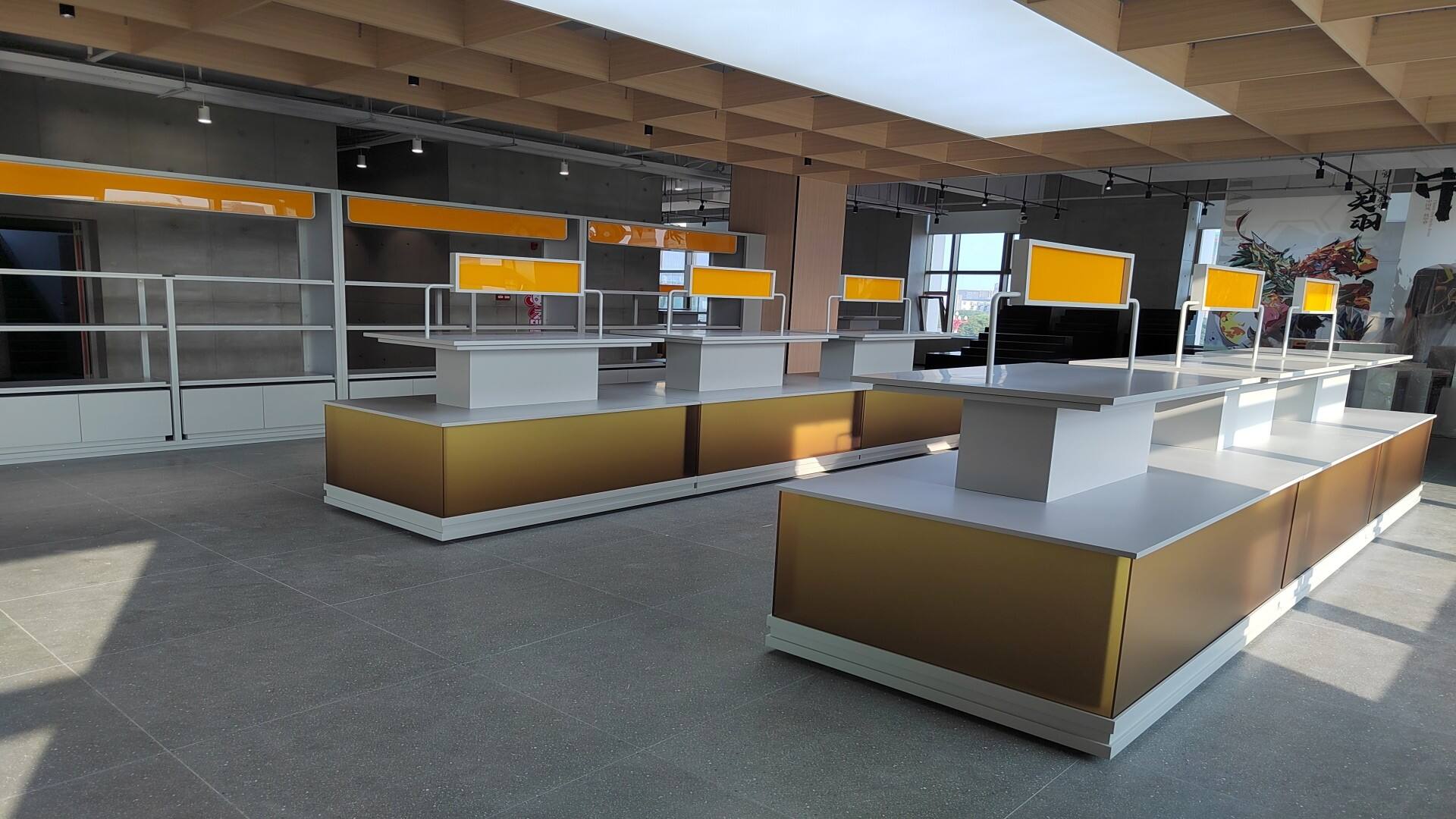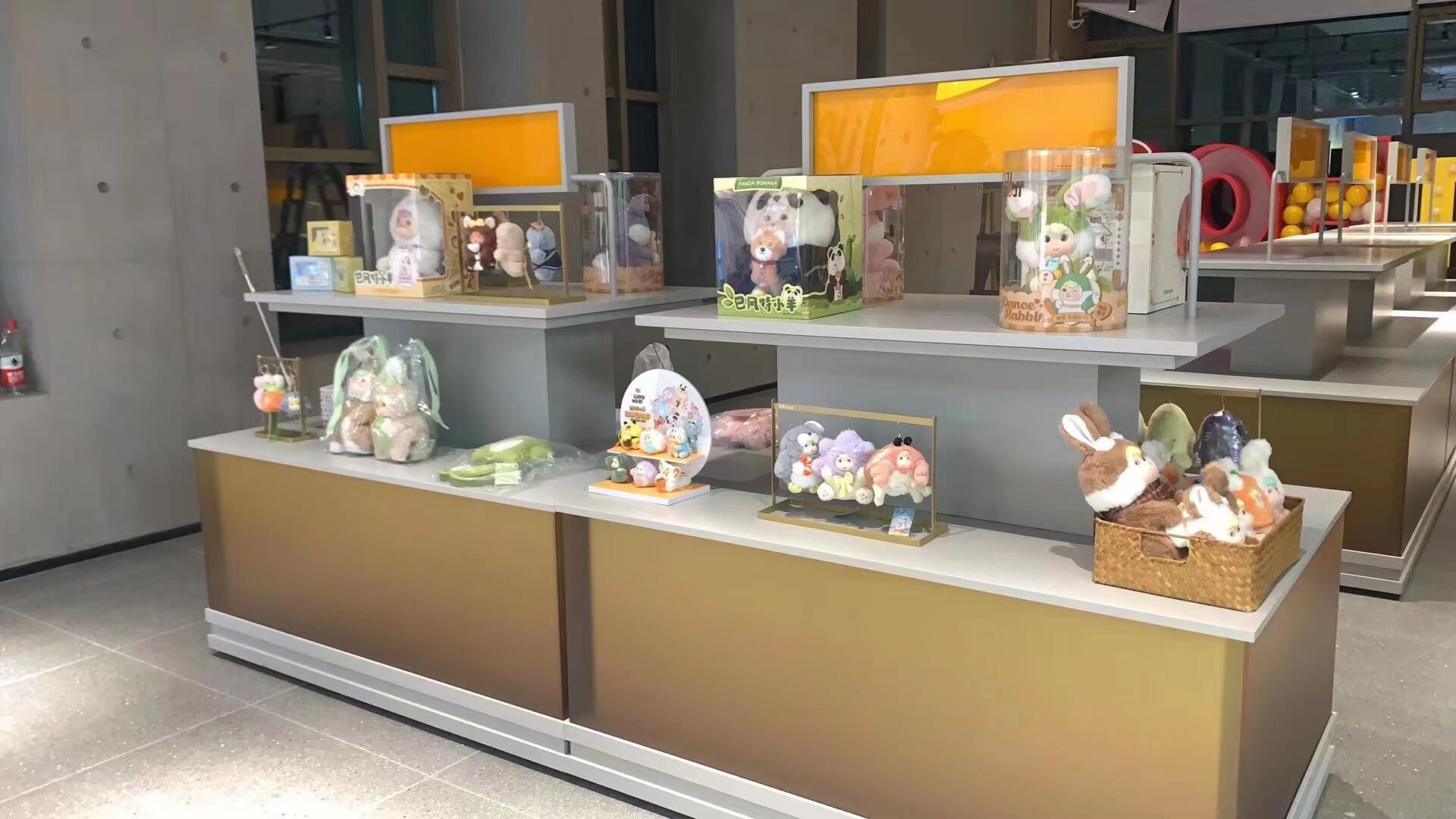استغلال المساحة العمودية لتحقيق كفاءة البيع بالتجزئة
ثنائي الجانب رفوف تصاميم للتخزين الكثيف
أنظمة الأرفف المزدوجة الجانبين هي حل اقتصادي لمحال التجزئة التي ترغب في الاستفادة من المساحة الرأسية، مما يمكّنها من حمل المزيد من البضائع دون الحاجة إلى مساحة أرضية إضافية. هذه التصاميم تكون مفيدة بشكل خاص عندما يكون لديك مساحة قليلة أو مجموعة كبيرة حيث توفر كفاءة في استخدام المساحة عن طريق توفير الوصول من كلا جانبي الممر. يمكن لهذا النوع من نظام الرفوف زيادة كثافة التخزين بنسبة 30-40٪ كما هو مدعى بين المصادر الصناعية. هذه القدرة الإضافية على تخزين المنتجات تسمح للتجار بحمل مخزونات أكبر وتصميم متاجر أكثر كثافة. بالإضافة إلى ذلك، توفر الأرفف المزدوجة جانبًا وظائف تعزيز التفاعل مع العملاء، حيث تضع السلع ضمن متناول اليد من كلا الجانبين وتتيح للمتسوقين "اكتشاف المزيد" أثناء التسوق.
استراتيجيات ذكية لوضع المنتجات في العرض العمودي
التسويق الاستراتيجي مع وضع منتجات ذكية في العرض العمودي هو السر وراء زيادة التفاعل مع العملاء وتعزيز المبيعات. تصنيف السلع بناءً على مدى استخدامها أو الحاجة إلى تدويرها يساعد في ضمان إمكانية الوصول السريع إلى المنتجات الشائعة. وفقًا للأبحاث السوقية، يمكن لهذا النهج أن يزيد من ظهور المنتج والمبيعات بنسبة تصل إلى 30%. استخدام طرق تسويقية مثل الجمع بين المنتجات المكملة أو استخدام لافتات جذابة يمكن أن يضيف المزيد من التركيز لهذه العروض. يمكن للبائعين أن يوجهوا انتباه العملاء نحو مبيعات أعلى عن طريق وضع المنتجات على مستوى النظر مع دعوات تحفيزية للجمهور لزيادة الرؤية التجارية. تقنيات العرض المعلق الفعالة تضمن تحسين استغلال مساحة المتجر بشكل كامل، مما يساهم في تعظيم المساحة التجارية.
تحسين وصول الموظفين من خلال ترتيب الأرفف
ميزات الأرفف الأرجونومية لتسريع إعادة التعبئة
أنظمة الرفوف الأرجونومية تجعل فرقًا حقيقيًا عندما يتعلق الأمر بتعظيم وصول الموظفين وتقليل الإجهاد أثناء إعادة التعبئة من خلال وضع المنتجات عند الارتفاع المثالي. بناءً على مبادئ الأرجونوميا، يمكن لترتيب الرفوف لتقليل الانحناء والتمدد أن يوفر وقت إعادة التعبئة بنسبة تصل إلى 25٪، وهو بلا شك دفعة للكفاءة في العمل. على سبيل المثال، يمكن للرفوف ضمن متناول السهل تسريع عملية إعادة التعبئة، مما يسمح للموظفين في المتجر بالتركيز على واجبات أخرى مهمة. بالإضافة إلى ذلك، فإن هذه الأنماط الأرجونومية تخلق بيئة عمل أكثر أمانًا، وهو أمر جيد دائمًا. (أقل تعويضات للعاملين والإرهاق). لا تقتصر فوائد هذه الاستراتيجية للرفوف على تعزيز كفاءة العاملين، بل تساعد أيضًا في القضاء على العوائق التشغيلية.
أنظمة التسمية المتكاملة لمعرفة المخزون بسرعة
إنشاء أنظمة تصنيف متكاملة يمكن أن يجعل عمليات المخزون الخاصة بك أسهل بكثير عند القيام بذلك عندما يتم تسمية كل شيء وتصنيفه بشكل صحيح. وفقًا للدراسة، يمكن أن يقلل التصنيف المناسب من وقت الوصول إلى المخزون بنسبة تصل إلى 40٪، مما يعني أن الموظفين يمكنهم بسهولة العثور على إعادة تعبئة العناصر. توفر حلول التسمية الرقمية مثل رموز QR كفاءة أكبر، مما يتيح للمستهلكين الاتصال بمعلومات حديثة حول المخزون أو استخدام المنتج. هذه الاتصالات تمكن موظفيك من البحث عن التفاصيل لكل عنصر على الفور وتسرع عملية إعادة التعبئة. بالإضافة إلى ذلك، مع التصنيف داخل المسار، يؤدي ذلك إلى تحسين خدمة العملاء حيث يمكن للموظفين توجيه العملاء بشكل أفضل من خلال تحديد العناصر المرغوبة والعثور عليها بسرعة.
تقليل الاكتظاظ على الأرضية باستخدام تصميم الرفوف الاستراتيجي
حلول الرفوف القابلة للتعديل لتصميمات الأرضيات الديناميكية
تُشكل بيئات البيع بالتجزئة المرنة حلول الأرفف القابلة للتعديل العمود الفقري لبيئات البيع بالتجزئة المرنة. يمكنها تلبية احتياجات تغيير تصميمات المتجر على الفور وفقًا للتغيرات، مما يُحسّن من استخدام المساحة. غالبًا ما تجد المتاجر التي تستخدم أنظمة الأرفف القابلة للتعديل أن أرضياتها أقل ازدحامًا، حيث يمكن نقل وتعديل الأرفف لتلبية احتياجات تسويق المنتجات والعروض المختلفة. هذه المرونة مهمة خلال العطلات أو التغييرات الموسمية عندما يكون من الضروري إعادة ترتيب خطط الأرضيات لاستيعاب حركة الزبائن الأكبر دون التضحية بسهولة الوصول وتدفق العملاء.
شاشات مائلة وتقنيات تحسين تدفق الممرات
تُحسّن تنفيذ رفوف مائلة في تخطيط الممرات من الرؤية للمنتج وللزبون. يمكن أن تقود العروض المائلة بشكل طبيعي المشترين عبر الممرات، مما يخفف الازدحام ويشجع على زيادة وقت التواجد، والذي قد يزيد بنسبة تصل إلى 15%، وفقًا للدراسات. هذه الإدراج الاستراتيجي يشجع على المزيد من التفاعل مع المنتجات ويزيد من احتمالية إتمام البيع. كما أن هناك عدة ارتفاعات وزوايا عرض مختلفة لجعل التسوق أكثر كفاءة حيث لا توجد حواجز ويمكن للعملاء التنقل بحرية وسهولة داخل المتجر.
تسريع عمليات إدارة المخزون
رفوف مزوّدة بتقنية RFID لمراقبة المخزون في الوقت الفعلي
توفر تقنية الأرفف مع RFID وسيلة واعدة لعمليات التخزين، مع مزايا مثل التحقق من المخزون في الوقت الفعلي بشكل عملي، مما يوفر تحسينًا كبيرًا في دقة إدارة المخزون. أشارت تقارير صناعية إلى أن تقنية RFID يمكن أن تقلل من اختلافات المخزون بنسبة تصل إلى 30% في قطاع التجزئة. هذا مهم حتى يتمكن البائعون من تتبع مخزونهم بدقة، ومنع الإفراط في التخزين أو نفاد المخزون. أحد الفوائد الرئيسية لحلول RFID هو التلقائية - لم يعد على الموظفين إنفاق وقت في التحقق من المخزون يدويًا. هذه التغييرات تبسط العمليات وتزيد من فعالية وكفاءة أنظمة إدارة البيع بالتجزئة.

أنظمة التصنيف بالألوان لتحكم بصري في المخزون
المناطق مصبوغة بألوان مختلفة، وهو ما يتيح تحديدًا بصريًا سريعًا لمكان تواجد المنتجات بحيث يمكن نقل العناصر إلى الرفوف بسهولة، مع إمكانية إعادة المنتجات إلى المخزون بسرعة وتوافرها بسهولة للعملاء. كما نلاحظ من الإحصائيات، يمكن تحقيق معدل استرجاع أسرع بنسبة تصل إلى 10٪ عند استخدام النظام الملون، وهذا الفرق قد يكون حاسمًا أثناء الأوقات الذروة. مثل هذه الأنظمة تضيف تنظيمًا وترتيبًا، مما يقلل من الأخطاء أثناء عمليات إعادة الطلب والتفتيش. تعتبر الأنظمة الملونة نظامًا للاستدعاء البصري، مما يساعد في التحكم بالمخزونات خاصة عند استخدامها بالتوازي مع الاستهلاك المتقطع / غير المستمر. إطلاق كميات أقل من الأجزاء يسمح بتقليل كبير في مستوى مخزون الأجزاء. التجار الذين يتبعون هذا النهج هم الأكثر احتمالاً لأن يكونوا مستعدين لإدارة المخزون بشكل عام والاستفادة القصوى من الموارد التي يمتلكونها.
تعزيز رؤية المنتج وتفاعل العملاء
مبادئ عرض المنتجات عند مستوى النظر لترتيب الرفوف
التسويق على مستوى العين هو جانب حاسم من جوانب البيع بالتجزئة يركز على بيع أكثر المنتجات جاذبية أو ربحية فقط على مستوى العين لضمان إتمام عملية البيع. بناءً على أبحاث علم السلوك، فإن المنتجات الموجودة على مستوى العين تحظى بنسبة تزيد عن 70% من الانتباه مقارنة بتلك الموجودة في أماكن أخرى. مثل هذه الاستراتيجيات في عرض الرفوف لا تجعل المنتجات مرئية فحسب، بل لها تأثير كبير على ما يشتريه العملاء من الرفوف. يمكن للبائعين بالتجزئة زيادة إجمالي حجم المبيعات من خلال التركيز الضيق، وذلك بجذب انتباه العملاء إلى سلع معينة تدعوهم لشراء نبضي.
عناصر العرض التفاعلي التي تشجع التصفح
إضافة عناصر العرض التفاعلي لعرض الغرف، والمرافق التجارية أو صالات العرض تحظى بشعبية متزايدة بسبب قدرتها على زيادة التفاعل مع العملاء بشكل كبير. تقول الصناعة إن تقديم هذه الأنواع من المفاهيم يمكن أن يزيد من عدد الزوار بنسبة تصل إلى ربع العدد، لأنها تثير فضول العملاء بشكل طبيعي. هذه هي العروض التفاعلية التي لا تجذب المشترين المحتملين فقط، بل تتيح أيضًا فرص بيع إضافي وبيع متقاطع. يمكن تقديم تجارب أعمق مع المنتجات في البيئة التجارية لتقديم تجارب تسوق تفاعلية أكثر بهدف تعزيز المشاركة التجارية وزيادة المبيعات.
الأسئلة الشائعة
كيف يمكن أن تحسن الرفوف الثنائية الكفاءة التجارية؟
تزيد الرفوف الثنائية من سعة المخزون ضمن نفس مساحة الأرضية، وتزيد كثافة التخزين، وتعزز تفاعل العملاء، وتحافظ على تصاميم المتجر مدمجة.
ما هي استراتيجيات وضع المنتجات الذكية؟
يتعلق وضع المنتجات الذكية بتنظيم العناصر بناءً على الاستخدام أو أداء المبيعات، وتحسين الوضوح من خلال وضع المنتجات على مستوى عين المستهلك، واستخدام لافتات ملونة لتحفيز المبيعات.
كيف تفيد الأرفف المريحة موظفي التجزئة؟
تقلل الأرفف المريحة من الإجهاد عن طريق ضمان وجود المنتجات عند الارتفاعات المثلى، مما يسرع إعادة التزويد ويقلل من إصابات مكان العمل.
لماذا تعتبر الأرفف القابلة للتعديل مهمة؟
تتيح الأرفف القابلة للتعديل إجراء تعديلات مرنة في التخطيط لتقليل ازدحام المساحة ومواكبة التغييرات الموسمية أو زيادة حركة الزبائن.
ما هي الفوائد التي توفرها الأرفف المدعومة بتقنية RFID؟
تعزز تقنية RFID دقة مراقبة المخزون، وتقوم بحساب المخزون تلقائيًا، وتقلل من الاختلافات، وتحسن الكفاءة العامة.




